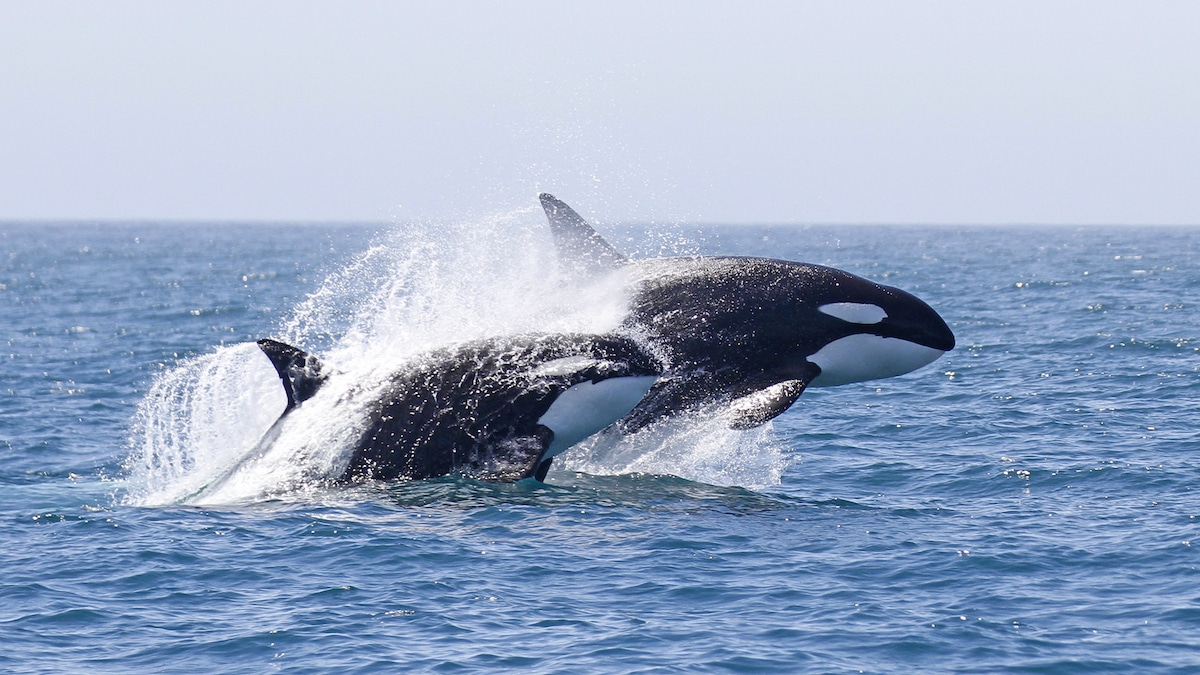‘Just Extraordinary’: Pod of 30 Killer Whales Gathers to Play in California’s Monterey Bay

 Why you can trust us
Why you can trust us
Founded in 2005 as an Ohio-based environmental newspaper, EcoWatch is a digital platform dedicated to publishing quality, science-based content on environmental issues, causes, and solutions.
An unusually large pod of 30 killer whales was spotted frolicking in Monterey Bay, California, on Sunday. The group was made up of 11 families, including six whales from Canada, said Nancy Black, director of the nonprofit California Killer Whale Project and a marine biologist at Monterey Bay Whale Watch, as reported by CNN.
Orcas generally gather to socialize and hunt together, but these whales were slapping their tails against the water, swimming in loops, doing belly flops and breaching in groups — clearly playing — in what Black told CNN was “the best sighting I’ve seen in my 35 years of killer whale research. Just extraordinary.”
Black has been studying the whales for more than three decades and said they travel in a “matriarchal society” led by mothers and grandmothers who share the responsibilities of educating young orcas and rearing calves, The Guardian reported. Family groups usually consist of three to seven individuals.
Killer whales are not actually whales, but members of the Delphinidae, or dolphin, family, according to NOAA Fisheries. The orca is the top predator in the ocean and the biggest of the dolphins.
Members of the Delphinidae also include pilot whales, another of the species with “whale” in their common names.
Killer whale calves can weigh as much as 400 pounds, but Black said during the sighting in Monterey Bay the orcas were, “Just like kids that are in a park, they get excited and play with the other kids and may be more active. The little ones were wrestling and rolling like a bunch of puppies,” as reported by The Guardian.
Black wasn’t sure how the large pod came together, since their underwater vocalizations can only reach about 10 miles, which isn’t much considering their territory reaches from California to Canada.
Killer whale pods usually hunt gray whale calves in Monterey Bay in April and May, and Black said the “playful celebration” was probably due to them having been full and properly nourished.
Black was familiar with many of the killer whales in the bay after working with the Killer Whale Project, which has been keeping track of the orcas who come to Monterey Bay for 30 years, and recognized some by the notches and markings in their tails.
Included in the killer whales Black had seen before were Emma and her daughter, Louise. Emma is known for being particularly adept at hunting gray whale calves, killing one in 15 minutes instead of the usual two hours, according to Black.
Black said it’s easier for whale watchers to spot killer whales in Monterey Bay due to the proximity of the canyon to the beach, reported The Orange County Register.
“They’re the whale that most people want to see when they go whale-watching,” Black said. “You just don’t know when they’re going to be around.”
Subscribe to get exclusive updates in our daily newsletter!
By signing up, you agree to the Terms of Use and Privacy Policy & to receive electronic communications from EcoWatch Media Group, which may include marketing promotions, advertisements and sponsored content.

 233k
233k  41k
41k  Subscribe
Subscribe 




